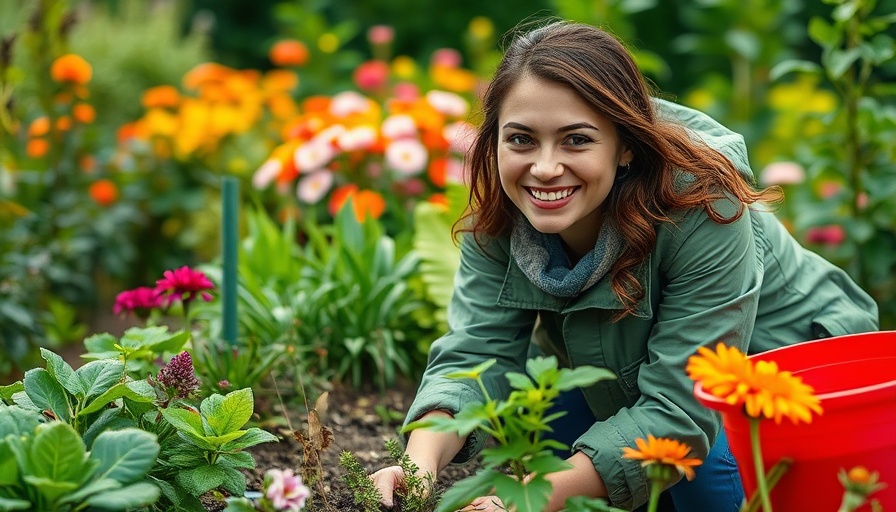
Understanding the Urgent Need for October Garden Preparation
As autumn settles over our gardens, many of us experience that bittersweet feeling — the joy of a bountiful harvest alongside the impending chill of winter. October is not just a transition month; it’s an urgent call to action for eco-conscious homeowners and homesteaders to prepare their gardens for the frosts and cold weather ahead. This preparation is vital not just for our plants but for creating a thriving habitat for wildlife as well. Leaving fallen fruits and leaves, planting cover crops, and mulching our beds are all sustainable practices that ensure we set our gardens up for success and contribute positively to the ecosystem. Because let’s face it, who doesn’t love a spring garden bursting with life after a diligent autumn?”
12 Essential Tasks for Your Winter-Ready Garden
Here’s a comprehensive look at the twelve urgent tasks to address this October:
Plant Late-Winter-Flowering Bulbs: Consider planting colorful Iris varieties right now; their blooms will usher in the spring with beauty. Not only do they enhance our garden aesthetics, but they also support pollinators once they bloom.
Add Protective Mulch: A layer of organic mulch protects the soil, retains moisture, and adds nutrients as it decomposes. Plus, did you know it encourages beneficial microorganisms and earthworms?
Start Your Elephant Garlic: Plant elephant garlic, which not only adds flavor to our dishes but also takes advantage of the long growing season. It's ideal to plant it in well-drained soil now for a successful harvest in summer.
Let Nature Thrive with Fallen Fruit: Fallen apples and other fruits provide a feast for birds and other wildlife. Instead of removing them, view them as an essential part of your garden ecosystem.
Weed and Clear Out Debris: Clearing debris helps ward off disease and pests, ensuring our gardens are healthy and ready for the spring blooms ahead.
Prepare Soil for Spring Planting: A good practice in October is enriching the soil with compost; this will work wonders for nutrient levels when spring arrives.
Plant Late-Season Wildflowers: These not only support local biodiversity but will contribute to a vibrant garden in the coming season.
Check and Organize Garden Tools: Maintain your tools to ensure you’re ready to roll when planting season resumes.
Reflect on Your Garden’s Journey: Keep a gardening journal to track what worked well and what didn’t as this will help you plan for future success.
Continue Water Conservation Practices: As rainwater collects, consider a rainwater catchment system to reduce your water usage effectively.
Implement Zero-Waste Practices: Composting your kitchen scraps contributes to a rich organic matter source that nourishes your garden.
Maintain Energy Efficiency: By winterizing your garden spaces, you can insulate and protect your plants, which ultimately conserves energy.
The Role of Wildlife in Sustainable Gardening
It’s crucial to remember that gardening isn’t just about our plants; it’s about the vibrant ecosystem that surrounds them. Leaving plant material to decompose in your garden over winter supports insects that hibernate, providing a natural food source when spring returns. Encouraging wildlife into our gardens through thoughtful design and management is essential for a healthy ecosystem. Sustainable gardening practices contribute not only to the aesthetics of our home but also alleviate the stress on local wildlife, ensuring they thrive alongside us.
Practical Tips for Eco-Friendly Gardeners
As you prepare for winter, remember that gardening is a continuous learning process. Embrace this slower season as an opportunity to educate yourself. Consider joining local garden clubs or community gardening workshops to exchange ideas on eco-friendly practices. These social connections deepen your knowledge and provide a shared community of support, making you feel less alone in your efforts to lead a sustainable lifestyle.
Final Inspirations to Boost Your Gardening Resolve
Embrace the beauty of autumn and the preparation it calls for. Every action counts towards a sustainable future. Start by implementing these urgent tasks and reflecting on your gardening journey. You’ll be amazed at how your careful planning will transform into a flourishing garden by spring. With each seed you plant and every eco-friendly practice you adopt, remember: you’re nurturing not only your little corner of the earth but also contributing to a larger movement towards sustainability.
Call To Action: Ready to embrace these eco-friendly practices this October? Start transforming your gardening habits and experience the joy of watching your garden flourish in spring. Dive deeper into sustainable home design today!
 Add Row
Add Row  Add
Add 




Write A Comment